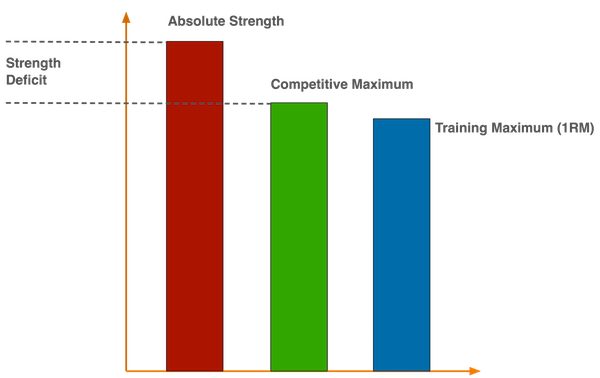The primary sub-qualities of strength can be categorized into seven sub-qualities.
1. Absolute strength
2. Maximal strength
3. Relative strength
4. Competition Maximum vs. Training Maximum
5. Static Strength
6. Speed strength – with sub-groups that include:
a. Starting strength
b. Explosive strength
c. Reactive strength
7. Endurance strength
It should be noted that some authors categorized these sub-qualities with different definitions. The definitions presented here have been referenced from a number of sources to give the definition that we utilize.
Absolute Strength
The maximum amount of force your muscles can produce in a single contraction exceeding ordinary levels of absolute strength. This would take a complete override of all the inhibitory and protective mechanisms of the joint and antagonist.
This form of strength would be only exhibited only in extreme emergency situations. An example of this is where a mother lifts a car off their child irrespective of what potential damage that may occur to the mother.
Maximal Strength
The peak force or torque that the neuromuscular system is capable of producing in a single maximum voluntary contraction, irrespective of the rate of force production.
Relative Strength
The maximum amount of force your muscles can produce respective of body weight but irrespective time of force development.
Competition Maximum vs. Training Maximum
Training maximum is estimated to be a weight between 5-12% below competition maximum. The only difference between competition maximum and training maximum is the increased neural drive produced by the mental state.
During the competitive maximum neural drive mechanism is increased – The Alfa charges up the Gamma nervous system producing a neural drive capable of a lifting a considerably greater load than that of the training maximum.

Static Strength
This represents the ability to produce force at a specific joint angle. This is sometimes referred to as Isometric Strength.
Speed-Strength
The ability of the neuromuscular system to produce the greatest possible force in the shortest possible time.
a. Starting Strength
The ability to generate maximum force at the beginning of a movement.
b. Explosive Strength
The ability to continue increasing the force developed from the starting strength.
c. Reactive Strength (Elastic Strength)
The ability to quickly switch from an eccentric contraction to a concentric contraction.
Strength Endurance
The ability to produce muscular contractions over an extended period. Also known as muscular endurance.
